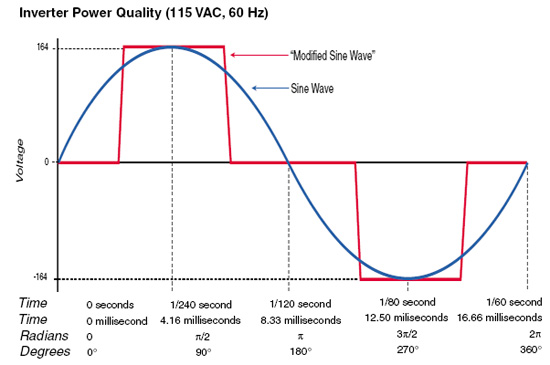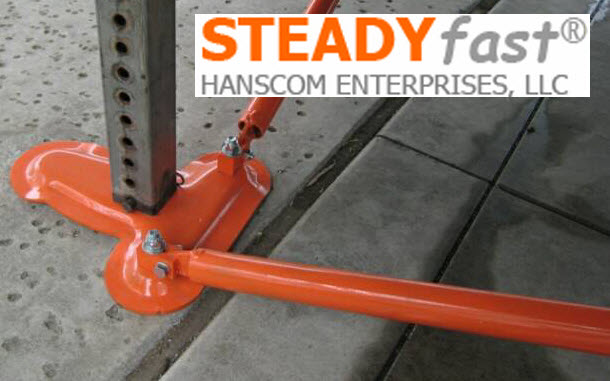By Don Wilson; Xantrex Tech Doctor
Source: RV Daily Report
One of the most common tech questions debated today includes the best choice for inverter installations between true sine wave (TSW), sometimes referred to as pure sine wave, or a modified sine wave (MSW) technology.
Let’s begin by addressing what alternating current (AC) means. AC literally means that the current alternates its direction over and over again every 8 milliseconds for the US power grid. As is demonstrated in the accompanying chart, a TSW, like shore power, alternates smoothly with a sinusoidal curve that has a rounded peak and a clean ‘zero cross’ to a rounded valley.
MSW produces instantaneous peak voltage for a few milliseconds, down to zero for a few milliseconds, then back to the valley. Now that we’ve covered the foundation of how AC operates, let’s address the bigger issue.
MSW power is usually sufficient to run many electronic devices with some distinct exceptions. One example is a typical digital clock. Some clocks tell time by using a charged crystal that has a consistent pulse which a microprocessor calculates time with a simple algorithm. These clocks are not affected by MSW power.
Other digital clocks use the incoming AC current to calculate time. The processor ‘counts’ how many times the voltage reaches zero, or ‘zero crosses.’ TSW (true sine wave) waveforms cross zero cleanly, while MSW waveforms ‘rest’ on zero for a few milliseconds. The processor could interpret this rest as multiple zero crosses resulting in the time being calculated incorrectly. Many electronic devices utilize digital time calculations as a function of their operation. Other issues that can occur with MSW inverters are many models of electric blankets, coffee makers, laser printers and other devices that regulate heat using a microprocessor that may not operate correctly.
Advantages of using modified sine wave products
Modified sine wave products are initially more economical than true sine wave products. In addition, MSW inverters have the advantage when the load is a simple induction load like a motor, or a resistive load like a light bulb. MSW inverters easily fill this role and typically use DC more efficiently than their TSW counterparts.
However, with today’s technological advancements and the rapid proliferation of sensitive electronics that require true sine wave power to operate correctly, RV owners often now prefer the TSW inverter in lieu of the more limited MSW inverter, particularly when it can now be purchased for roughly the same price.
To determine which power source is right for you, you really must consider how you want to use your inverter. The more complex or state-of-the-art your demand is, the more likely you will want and need to consider a TSW inverter. If, on the other hand, your demand is simple power and you have no aspirations of utilizing today’s sensitive electronic devices either now or in the future, a MSW inverter is the more economical choice.
CAPTION: True sine wave (Blue) curves smoothly compared to a modified sine wave (Red).



3 comments
I have had problems with rechargeable flashlight/night lights and electric blanket controls that will overheat and burn internal parts when operated on modified sign wave.
I had a rechargeable flashlight quit working, I never thought about it being the inverter. Something new to check. Thanks for sharing.
Most modern electronic devices with internal rechargeable batteries require TSM to avoid failure.